- Home
- Robert Ludlum
The Bancroft Strategy Page 9
The Bancroft Strategy Read online
Page 9
“My God,” Andrea said a few minutes later. What looked, from a distance, like a hillock, a swelling of the earth, stood revealed as a vast, curving structure of shingle and stone, something old but unusual. It had nothing of the usual English-country-house kind of grandeur—there was no Gothic masonry; there were no leaded windows, no wings or courtyards. Instead, it was composed of simple shapes—cones, columns, rectangles—and built of wood and locally quarried sandstone. Its palette of earth tones—rich hues of rusty red, sepia, umber—was why it so readily blended into its surroundings. Which made it all the more startling when Andrea came close enough to take it in—its size, the elegance of every detail: the wide oval porches, the sawtooth shingled walls, the gently asymmetric forms. It was immense, and yet it was so lacking in ostentation that its immensity seemed on the scale of nature, not artifice.
Andrea felt breathless.
“It’s a beaut,” the driver agreed. “Not that Dr. Bancroft has a lot of use for it. Up to him, he’d have sold it off and moved into a bed-and-breakfast. But they say the charter won’t have it.”
“Good thing.”
“I guess it’s part yours now.” The car pulled up to a graveled parking area to one side of the vast building. Andrea felt weak-kneed as she made her way up a low porch and into a light-flooded foyer. Smells of old wood and furniture polish were just detectable. A starched woman greeted her at once, with a wide smile and a thick three-ring binder.
“The agenda,” the woman—stiff coppery hair, upturned nose—explained to Andrea. “We’re delighted to have you on board.”
“This place is amazing,” Andrea said, gesturing around her.
The woman’s lacquered hair barely moved as she nodded vigorously. “It was built in 1915, from a design of H. H. Richardson’s, we’re told—a design he’d never been able to get built during his lifetime. Thirty years after his death, the world was at war, and this country was preparing to jump into the fight. A dark time. But not for the Bancrofts.”
That was right, Andrea mused—wasn’t there some story about a Bancroft who had made a fortune in munitions during the First World War? Her historical interest had never extended to her father’s family, but she had picked up the basic lineaments.
The trustees’ room was on the second floor, multipaned windows facing onto a terraced garden, which was profusion of vibrant colors. Andrea was escorted to a seat on one side of a long table, a sort of Georgian banquet table, where at least a dozen others, some combination of trustees and foundation staff members, were already gathered. An elegant tea-and-coffee service had been set up in one corner of the room. The men and women around the table were bantering quietly, and as Andrea made a show of paging through the binder, she heard countless references that were just above her head: clubs she hadn’t quite heard of, brand names that might have been a kind of yacht but might have been a kind of cigar, admission directors of grand-sounding boarding schools she had never heard of. From a door at the opposite end of the room, a couple of suited men emerged, accompanied by a much younger assistant. The conversational murmur began to die down.
“Those are program officers from the foundation,” the man seated to Andrea’s right explained. “Means it’s show-and-tell time.” Andrea turned to her neighbor: slightly pudgy, salt-and-pepper hair, an overgenerous application of gel preserving visible comb tracks. His tanned face did not match his white and hairless hands, and the fringes of hair around his forehead had acquired a faint orange tint.
“I’m Andrea,” she said.
“Simon Bancroft,” he said, something wet and buzzy in his voice. His eyes were gunmetal gray, and inexpressive. His forehead was oddly immobile, she decided; his eyebrows scarcely moved as he spoke. “You’re Reynolds’s girl, right?”
“He was my father,” she responded, insisting on a shade of meaning doubtless lost on him. She wasn’t Reynolds’s girl; she was, if anything, Laura’s girl.
Scion of the outcast.
She felt a surge of hostility toward the man beside her, like the molecular call of some ancient blood feud, and then, oddly, it passed. What really disturbed her, she realized, wasn’t a sense of being out of place; it was her sense of belonging. An outsider, an insider: Which was she now?
What if it were up to her to decide?
Loose the hound, Todd Belknap thought mordantly. Loose the hound of hell.
Every manhole cover in Rome was emblazoned with the initials “SPQR.” Senatus Populusque Romanus: The Senate and the People of Rome. Once a grand political gesture, he reflected; now, like so many grand political gestures, little more than a logo. With a small crowbar, the operative prized up the cover and descended a scuttle ladder until he found himself on a rickety-seeming wooden catwalk in a fetid space about twenty feet high and five feet wide. He flicked his flashlight to its medium setting, moving the beam around to inspect his surroundings. The sides of the concrete cavern shimmered with water bugs. Cables, most the thickness of a cigarillo, lined the sides like swagged drapery—black, orange, red, yellow, blue. Fifty-year-old telephone cables hung alongside coaxial from the seventies and eighties, and modern fiber-optic cable freshly installed by municipal utilities like Enel and ACEA. The sheathing colors would have meant something to most people who drove an Enel van and wore an Enel uniform, Belknap supposed. He’d just have to be an exception.
Beads of water formed at the ceiling, gathered strength, and dripped down at irregular intervals. Belknap consulted a small luminescent compass. The villa was an eighth of a mile ahead, and he easily traversed most of the distance, the main utilities tunnel running parallel to the street.
Can’t keep a good man down, he mused. Or a bad one.
Will Garrison’s threats and protests had passed through Belknap like a bad plate of clams. Had he sometimes gone too far in the past? No doubt. Belknap wasn’t one to wait for a WALK sign before crossing at an intersection. He wasn’t good with paperwork. The arc of the universe is long, but it bends toward justice, a prophet had said, and Belknap hoped that was true. If it took too long, though, Belknap was happy to do the bending himself.
He was not an introspective sort, but he had no illusions about himself, either. He could be irascible, hotheaded, even brutal, no doubt. There were moments—rare ones—when fury overrode his conscious will, and in those moments he knew what it must be like to be possessed. He valued, above all, loyalty: It was a motive force in his life. He could think of nothing more despicable than disloyalty—except it wasn’t a matter of thinking. The conviction was visceral, part of the fiber of his very being.
There was a three-foot gap in the catwalk where the tunnel, following the street above, made a bend. Belknap noticed it just in time and jumped across it. His tools—the crowbar, the grapnel launcher—banged uncomfortably against his thigh. Though the grapnel launcher was a compact model, its housing made of a lightweight polymer, it was still bulky, and the three-pronged grappling hook kept slipping out of the Velcro straps.
Despite Garrison’s squid-ink cloud of rationalizations, Belknap’s every instinct told him that there was a connection between Ansari’s murder and Jared Rinehart’s disappearance. Yet there was more than instinct to consider. Belknap’s friends at Consular Operations—his real friends—weren’t going to cut him off because of Garrison’s shit storm, and when he pressed one of them, he learned about a few highly suggestive intel reports. These were sourced to so-called “unspecified channels”—highly confidential assets—and, as his analyst friend warned, the picture was still murky. But the early indications were that Rinehart’s kidnappers had been either enlisted or co-opted by another, far more formidable organization. The puppet masters had puppet masters. The murder of Khalil Ansari was consistent with this pattern—a stealthy takeover of one network by another, more powerful one.
He had to be close to the villa now. Yet the pathway he had been walking along would not lead him to the villa itself; the cable entered the house through hardened PVC pipes only a few inches i
n diameter. The conduits for water and sewage were less than a foot across. Having cross-checked the architectural blueprints with a geological survey, however, Belknap realized that there was another way in. The two hundred and sixty miles of the Roman aqueduct systems—all but thirty miles of which were subterranean—had required a legion of laborers to maintain, working under the direction of the Curator Aquarum, the keeper of the waters. And the Curator Aquarum had always insisted that the waterways be constructed with an eye toward their upkeep and repair: The ancient equivalent of access panels—sheathed openings—were installed at regular intervals so that blockages could be swiftly cleared. In the honeycombed earth beneath the streets of Rome, modern utilities tunnels regularly intersected with the chutes and dropshafts of the ancient aqueducts, including the aqueducts of Trajan. Belknap again checked his compass, along with a pedometer-like device that measured horizontal displacement. Between the two instruments, he would be able to gauge his position. Now he stopped in front of a hinged metal gate and made his way into an adjoining tunnel, where the gas and water mains ran. The air was as stagnant as ditchwater, thick with mold and mildew and centuries of slow fungal growth. Whereas the utilities tunnel ran approximately parallel with the street above, the cavernous space he had entered soon began to slope downward, every step taking him deeper and deeper into the earth. The air, too, seemed to grow denser and more sulfurous as he descended.
The tunnel—only it was truly more like a cavern at this point, after so many centuries, with a crumbling roof and a debris-cluttered floor, closer to a natural geological formation than a man-made conduit—alternately narrowed and flared, and reaching his destination required much doubling back, many circuitous turns in the subterranean maze. Some of the passageways had probably not been traversed by a human being in centuries.
The unwelcome thought came to him that if he should drop either his flashlight or his compass he could easily be lost forever, a moldering skeleton to be encountered by the next foolhardy explorer however many years in the future.
Beneath his hardhat, his hair was soaked in sweat; he had to stop and tie a handkerchief around his forehead, bandana-style, to keep it from dripping into his eyes. At last, he was, by his calculations, almost directly beneath the villa—but fifty feet beneath it, the depth of a prairie well.
The basement storm grate indicated on the architectural schematics was what had first given him the idea. These were not an uncommon feature among villas built over the ancient and now-empty waterways, it seemed. It was, indeed, the easiest way to alleviate basement flooding during heavy rains. To prevent clogging, a shaft would be dug straight down until it met with one of the disused Roman tunnels.
Now he pushed the slide on his flashlight all the way forward, shifting its beam to its brightest mode. A few minutes of searching revealed a lichen-covered mound of earth on the rocky tunnel floor, and above it, far above it—he held a small pair of digital binoculars to his eyes and peered—was a grate. He folded down the prongs of the pneumatic grapnel gun, aimed it vertically, and squeezed on the triggering device. With a soft popping noise, the nozzle discharged the folded hook and an attached pair of linked polypropylene lines. A clank told him that the grappling hook had caught. He gave the trailing line a tug, and it held firm. With another tug, the polypropylene skein unfolded into a sort of ladder. It seemed flimsy, insubstantial, but appearances were deceptive. The braided microfilament structure would hold many times his body weight.
He began to climb. The transverse lines were spaced two feet apart between the two main filament braids, and by the time he was a third of the way up, a slip of the foot would be fatal. All would be for naught, of course, if someone was already in the basement, had seen the grappling hook. But the odds were very much against it. A security guard would make a pro forma inspection—indeed, he was counting on the fact—but only once or twice a night.
The grate, when he finally reached it, was heavy—perhaps two hundred pounds of steel, secured in place by its own massive weight—and the filament ladder would not provide him sufficient purchase to lift it. Belknap’s stomach clenched. To have come so far…to be inches away…
Desperately, he looked around at the lining of the shaft where it met the basement storm drain. A collar of steel, like the mouth of a funnel, had been installed there—it looked like seven-gauge sheet metal—and, with his small crowbar, he bent the material in two places so that it flared out and provided a makeshift ledge. Positioning his feet on opposite sides of the shaft, he pushed up at the grate. It was an unnatural angle of exertion; his elbows were higher than his shoulders as he started to push. The massive grate did not budge.
Belknap’s heart began to hammer, not from the exertion so much as from frustration, a sense of frustration he would not permit to edge into despair. He thought of Jared Rinehart, held somewhere by hirelings of the Ansari network and utterly subject to their will. You choose a friend with care, Jared had once said. And then you never let him down. Jared had kept his word. Would Belknap?
Belknap knew so many who had lost their lives for no good reason, whether at home or in the field. Mac “the Mountain” Marin had survived dozens of high-risk ops only to succumb at home to a burst aneurysm in some tiny vessel in the brain. Mickey Dummett—a man whose torso was stippled with four bullet entry-wound scars—gave up the ghost at a country intersection where a station-wagon driver failed to notice a stop sign. Alice Zahavi was shot dead in the course of an operation, but an operation so badly conceived from the get-go that it would have had no tactical or intelligence justification even if everything had gone right. These were good men and women to whom the fates assigned senseless, contemptible deaths. Just the hands they were dealt. Belknap took a deep breath. To give up his life in order to save a man like Jared Rinehart—there would be nobility in that. In an age where heroism was an endangered attribute, he could imagine worse deaths than this, and few better.
Now Belknap surged upward with every fiber of his body, possessed of a strength that somehow came to him as much as from him.
The grate moved.
Up, and over. He slid the massive disk off to one side, just enough to squeeze a hand through, and then used his other hand to push it further away. Hard metal on smooth concrete: quieter than he might have supposed.
And so, forty minutes after parking the utilities van, he made his way into the very place he had sought so desperately to avoid: one that had been designed to the exquisite—and profoundly twisted—specifications of the late Khalil Ansari.
Now came what Belknap always found the hardest part of all.
Waiting.
Katonah, New York
As the program officers launched into their overviews, Andrea concentrated, at first, on appearing composed and self-assured. Before long, however, she found herself riveted by the presentations. They should, by all rights, have been tedious. Yet she couldn’t get over how extensive the foundation’s activities were. Clean-water and vaccination projects in the Third World, literacy programs in Appalachia, programs to eradicate polio in Africa and Asia, programs to provide micronutrient supplementation throughout the world’s less-developed regions. Each foundation officer talked about the projects he or she oversaw in precise terms: costs, prospects, plans for the future, assessments of efficacy. The language was flat, pedestrian, uninflected. Yet what they were talking about was quite remarkable—one project after another that would transform the lives of thousands. In one instance, it involved the construction of waterways in impoverished regions, allowing irrigation and proper agriculture where only a subsistence living had been possible. A few photographs, displayed on a wall-mounted monitor, made the results vividly clear: The desert truly was being coaxed into bloom.
Like the Rockefeller Foundation, Bancroft had branch offices all over the planet, but it was careful to keep its overhead costs under strict control. Again and again, the presenters conveyed a businesslike ethic of “value for money,” a refreshing clarity of vision for
a nonprofit charitable organization, she thought—especially because “value,” in this context, referred to lives saved, suffering averted.
Perhaps that should not have been surprising, she reflected, given the man behind the foundation.
Paul Bancroft. It was a name that elicited trepidation and awe. Dr. Bancroft had always maintained a low profile: not for him the black-tie galas, the bold-type mentions in the society pages. What could never be kept entirely quiet was his multifaceted genius. Andrea recalled when, taking a junior-level seminar in the foundations of economics, she was obliged to master a set of multivariate functions known as Bancroft’s Theorem—and, delving into it, discovered that its inventor was actually a cousin of hers. Dr. Bancroft had been still in his twenties when he made major contributions to game theory and its applications to moral philosophy. But it was a more practical kind of wisdom that had created the foundation: a series of brilliant investments and speculations that had turned a handsome family fortune into an immense endowment, and transformed what had been a small-to-midsized foundation into one that encircled the globe.
The three o’clock presentation was given by a program officer named Randall Heywood: a red, leathery face that suggested too many years under a tropical sun, a bullet head with a close-cropped fringe of dark hair. His field was tropical medicine, and he was in charge of a program that directed funds toward research and development of malaria treatments. Ninety million dollars would be given as seed money to a group at the Howell Medical Institute, another ninety to a group at Johns Hopkins. Heywood spoke briefly about “molecular targets,” about vaccine protocols, about the special challenges presented by the pathogen, about the inadequacy of vaccines currently in development. About the million lives that were claimed each year by the most aggressive malaria parasite, Plasmodium falciparum.
A million lives. A statistic? An abstraction? Or a tragedy.

 The Bourne Identity
The Bourne Identity The Gemini Contenders: A Novel
The Gemini Contenders: A Novel The Bourne Legacy
The Bourne Legacy The Jason Directive
The Jason Directive The Bourne Supremacy
The Bourne Supremacy The Moscow Vector
The Moscow Vector The Road to Omaha: A Novel
The Road to Omaha: A Novel The Scorpio Illusion: A Novel
The Scorpio Illusion: A Novel The Ares Decision
The Ares Decision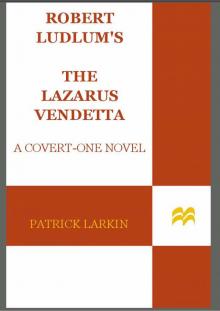 Robert Ludlum's the Lazarus Vendetta
Robert Ludlum's the Lazarus Vendetta The Bourne Ultimatum
The Bourne Ultimatum The Altman Code
The Altman Code The Road to Gandolfo: A Novel
The Road to Gandolfo: A Novel The Bourne Ascendancy
The Bourne Ascendancy The Matarese Countdown
The Matarese Countdown The Hades Factor
The Hades Factor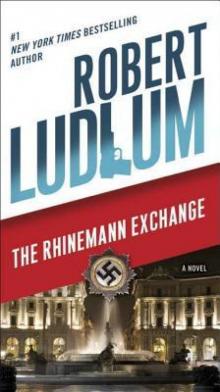 The Rhinemann Exchange: A Novel
The Rhinemann Exchange: A Novel The Sigma Protocol
The Sigma Protocol The Bourne Objective
The Bourne Objective The Bourne Sanction
The Bourne Sanction The Tristan Betrayal
The Tristan Betrayal The Janus Reprisal
The Janus Reprisal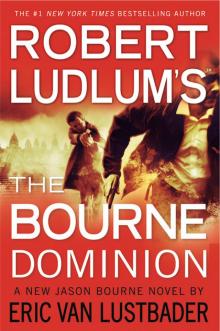 The Bourne Dominion
The Bourne Dominion The Ambler Warning
The Ambler Warning The Matlock Paper
The Matlock Paper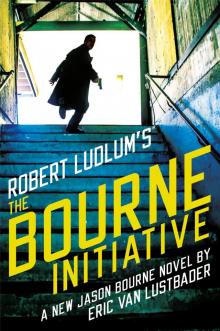 The Bourne Initiative
The Bourne Initiative The Arctic Event
The Arctic Event The Utopia Experiment
The Utopia Experiment The Scarlatti Inheritance
The Scarlatti Inheritance The Paris Option
The Paris Option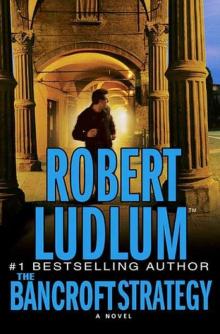 The Bancroft Strategy
The Bancroft Strategy The Bourne Retribution
The Bourne Retribution The Patriot Attack
The Patriot Attack The Cassandra Compact
The Cassandra Compact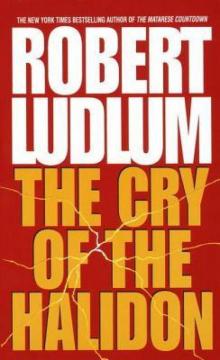 The Cry of the Halidon: A Novel
The Cry of the Halidon: A Novel The Geneva Strategy
The Geneva Strategy The Bourne Deception
The Bourne Deception The Apocalypse Watch
The Apocalypse Watch The Osterman Weekend: A Novel
The Osterman Weekend: A Novel The Matarese Circle
The Matarese Circle The Bourne Imperative
The Bourne Imperative The Bourne Enigma
The Bourne Enigma Scruff
Scruff The Parsifal Mosaic
The Parsifal Mosaic The Bourne Betrayal
The Bourne Betrayal The Aquitaine Progression: A Novel
The Aquitaine Progression: A Novel The Icarus Agenda
The Icarus Agenda Bourne 7 – The Bourne Deception jb-7
Bourne 7 – The Bourne Deception jb-7 The Lazarus Vendetta
The Lazarus Vendetta The Altman Code - Covert One 04
The Altman Code - Covert One 04 Robert Ludlum's The Arctic Event
Robert Ludlum's The Arctic Event The Lazarus Vendetta c-5
The Lazarus Vendetta c-5 The Bourne Identity jb-1
The Bourne Identity jb-1 The Bourne Ultimatum jb-3
The Bourne Ultimatum jb-3 Trevayne
Trevayne The Altman Code c-4
The Altman Code c-4 The Scorpio Illusion
The Scorpio Illusion The Aquitaine Progression
The Aquitaine Progression The Cry of the Halidon
The Cry of the Halidon The Cassandra Compact c-2
The Cassandra Compact c-2 The Bourne Supremacy jb-2
The Bourne Supremacy jb-2 The Rhinemann Exchange
The Rhinemann Exchange The Chancellor Manuscript
The Chancellor Manuscript The Ares Decision c-8
The Ares Decision c-8 The Road to Gandolfo
The Road to Gandolfo The Prometheus Deception
The Prometheus Deception The Hades Factor c-1
The Hades Factor c-1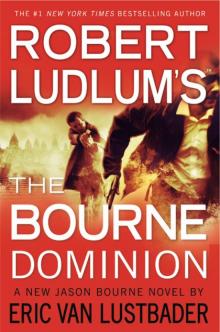 Robert Ludlum’s™ The Bourne Dominion
Robert Ludlum’s™ The Bourne Dominion The Gemini Contenders
The Gemini Contenders Bourne 4 - The Bourne Legacy
Bourne 4 - The Bourne Legacy The Holcroft Covenant
The Holcroft Covenant The Moscow Vector c-6
The Moscow Vector c-6